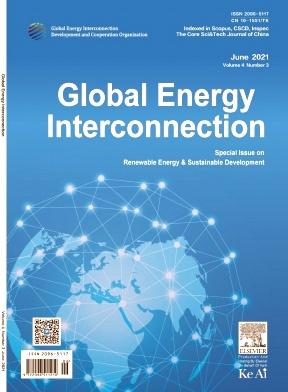Frequency regulation reserve optimization of wind-PV-storage power station considering online regulation contribution
IF 2.6
Q4 ENERGY & FUELS
引用次数: 0
Abstract
The frequency regulation reserve setting of wind-PV-storage power stations is crucial. However, the existing grid codes set up the station reserve in a static manner, where the synchronous generator characteristics and frequency-step disturbance scenario are considered. Thus, the advantages of flexible regulation of renewable generations are wasted, resulting in excessive curtailment of wind and solar resources. In this study, a method for optimizing the frequency regulation reserve of wind PV storage power stations was developed. Moreover, a station frequency regulation model was constructed, considering the field dynamic response and the coupling between the station and system frequency dynamics. Furthermore, a method for the online evaluation of the station frequency regulation was proposed based on the benchmark governor fitting. This method helps in overcoming the capacity-based reserve static setting. Finally, an optimization model was developed, along with the proposal of the linearized solving algorithm. The field data from the JH4# station in China’s MX power grid was considered for validation. The proposed method achieves a 24.77 % increase in the station income while ensuring the system frequency stability when compared with the grid code-based method.
考虑在线调节贡献的风电-蓄能电站调频储备优化
风电-蓄能电站的调频储备设置至关重要。然而,现有的电网规范以静态的方式建立了电站储备,其中考虑了同步发电机特性和频率阶跃干扰情况。这样,可再生能源发电灵活调控的优势就被浪费了,导致风能和太阳能资源的过度弃风。本文提出了一种优化风电光伏电站调频储备的方法。在此基础上,建立了考虑场强动态响应和台站与系统频率动态耦合的台站频率调节模型。在此基础上,提出了一种基于基准调速器拟合的车站调频在线评价方法。该方法有助于克服基于容量的储备静态设置。最后,建立了优化模型,提出了线性化求解算法。采用中国MX电网JH4#站的现场数据进行验证。与基于网格码的方法相比,该方法在保证系统频率稳定性的前提下,提高了24.77%的站点收益。
本文章由计算机程序翻译,如有差异,请以英文原文为准。
求助全文
约1分钟内获得全文
求助全文
来源期刊

Global Energy Interconnection
Engineering-Automotive Engineering
CiteScore
5.70
自引率
0.00%
发文量
985
审稿时长
15 weeks
 求助内容:
求助内容: 应助结果提醒方式:
应助结果提醒方式:


